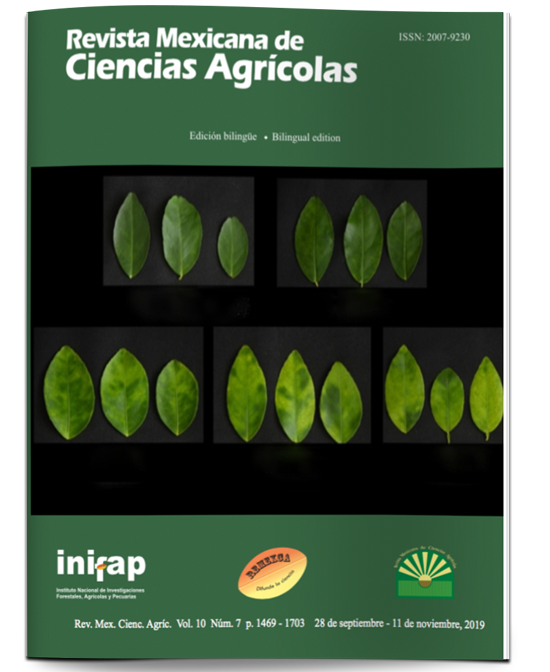Socio-economic conditions of corn producers in the municipalities of Villaflores and La Trinitaria, Chiapas, Mexico
DOI:
https://doi.org/10.29312/remexca.v10i7.1953Keywords:
differentiated public policies, income, quality of life, regional rural developmentAbstract
In Mexico, the agricultural sector has a complex structure in economic and social terms, which is reflected in socioeconomic imbalances in various areas of the country. This has resulted in rural producers considering as a means of subsistence, various systems of production and diversification of non-agricultural activities, in order to increase income, have greater opportunities for development and progress options in improving quality of life. The objective of this research was to determine the socioeconomic conditions in which the corn producers of the municipalities of Villaflores and La Trinitaria, Chiapas are located, in order to establish differentiated public policies that contribute to improving income and satisfying needs basics of the actors under study. Methodologically, stratified proportional affixation sampling and multivariate cluster analysis were applied using hierarchical and Wards clustering methods. The results determined the difference between the groups of the municipalities, which were: age and schooling of the producers, income from sales of production and non-agricultural activities, destination of the income they receive, access to health services, spaces and materials of the housing, and basic services. It is concluded that it is necessary to strengthen socio-economic policy and promote initiatives as a fundamental part of the regional rural development policy, so that it remains balanced in the social and economic spheres and ensures a decent standard of living for the inhabitants of rural communities.
Downloads
Published
How to Cite
Issue
Section
License
The authors who publish in Revista Mexicana de Ciencias Agrícolas accept the following conditions:
In accordance with copyright laws, Revista Mexicana de Ciencias Agrícolas recognizes and respects the authors’ moral right and ownership of property rights which will be transferred to the journal for dissemination in open access. Invariably, all the authors have to sign a letter of transfer of property rights and of originality of the article to Instituto Nacional de Investigaciones Forestales, Agrícolas y Pecuarias (INIFAP) [National Institute of Forestry, Agricultural and Livestock Research]. The author(s) must pay a fee for the reception of articles before proceeding to editorial review.
All the texts published by Revista Mexicana de Ciencias Agrícolas —with no exception— are distributed under a Creative Commons License Attribution-NonCommercial 4.0 International (CC BY-NC 4.0), which allows third parties to use the publication as long as the work’s authorship and its first publication in this journal are mentioned.
The author(s) can enter into independent and additional contractual agreements for the nonexclusive distribution of the version of the article published in Revista Mexicana de Ciencias Agrícolas (for example include it into an institutional repository or publish it in a book) as long as it is clearly and explicitly indicated that the work was published for the first time in Revista Mexicana de Ciencias Agrícolas.
For all the above, the authors shall send the Letter-transfer of Property Rights for the first publication duly filled in and signed by the author(s). This form must be sent as a PDF file to: revista_atm@yahoo.com.mx; cienciasagricola@inifap.gob.mx; remexca2017@gmail.
This work is licensed under a Creative Commons Attribution-Noncommercial 4.0 International license.



